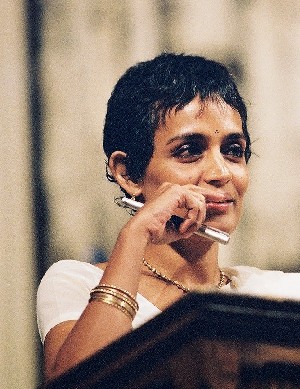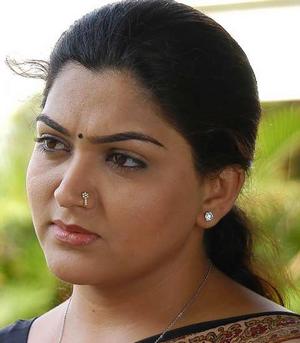Free Speech issues in India 2010
While vigilante groups had a field day and the mailed fist of the state was also used against both the media and civil society activists, the judiciary gave some relief for free speech in just a few instances, only to take it away in others.
A FREE SPEECH HUB report
Attacks on the media continued with impunity throughout 2010, the dissenting voices of writers and civil liberties activists were met with charges of sedition, vigilante groups continued to have a field day issuing diktats against films, plays, books and posters and the state stepped up measures to restrict broadcast and mobile communication in conflict areas and monitor mobile and internet communication.

In the first-ever exhaustive tracking of the state of freedom of speech and expression in India, the Free Speech Hub recorded 27 attacks on journalists, nine arrests or detention of journalists on various charges, six instances of attacks on writers and civil liberties activists, four cases of sedition against writers and civil liberties activists, 33 instances of curbs by vigilante groups on books, cinema, television shows, mobile communication or theatre performances and 34 instances of state or judicial restrictions and regulations on books and television shows.
The year 2010 also saw renowned artist M F Husain give up his Indian citizenship after prolonged harassment from rightwing forces. Despite belated assurances from the Indian government that he would be protected, the 92-year old artist chose to stay away.
In March, two persons lost their lives in Shimoga, Karnataka, protesting an article on the ‘burqa’ in Kannada Prabha, tragically becoming victims of sentiments whipped up by vested forces.

If, on the flip side, the judiciary rejected a ban on books (Shivaji: Hindu king in Islamic India by James Laine; Breathless in Bombay by Murzban Shroff) and upheld the right of Tamil actress Khushboo to express her opinions, on the other hand, the increasing attempts by the Indian government to demand encryption codes from service providers like Blackberry and more cyber regulations of email services citing security reasons and privacy issues in data-gathering for the UID, have only led to fears of a surveillance state. The deadline set by the Indian government expires January 31, 2011.
In all the major zones of conflict ??" Kashmir, Chhattisgarh, Orissa and the North-East, particularly Manipur, the media have been under attack, whether from security forces or from insurgency groups. In other areas, journalists were attacked merely for nosing around or for their investigative reports against police.
Curbs on the media in Kashmir during the protests throughout April-July 2010 included bans on SMS, television channels and the distribution of newspapers. The ban on SMS was only partially lifted for post-paid subscribers at the end of the year.
Journalists were particularly targeted by security forces in the ongoing conflict in Kashmir. Photographer Amaan Farooqui was shot in the leg by Deputy Superintendent of Police Safdar Samoon when he went to cover an encounter between security forces and alleged terrorists, Gowhar Bhat was assaulted by police while covering a PDP demonstration and later, during the height of the agitation by stone-pelting youth, Asif Qureshi, bureau chief of Star News, was made to pick up stones by CRPF jawans!
In Chhattisgarh, journalists caught in the crossfire between security forces and Maoists are wary of venturing too deep into the forests to cover the state’s Operation Green Hunt against the Maoists. Priyanka Borpujari and Satyen Bordolai, two journalists and film-maker Nishtha Jain were detained in January when they had gone to cover a ‘jan sunwai’ (public hearing) there while in December, journalists NRK Pillai, Yashwant Yadav and Anil Mishra were threatened by the state-sponsored vigilante group Salwa Judum.
In Orissa, the frequent attacks on journalists prompted a special investigation by the Free Speech Hub and its report concluded that the state remained a mere spectator as vested interests, including mining lobbies, had rendered the process of news-gathering dangerous and fearful.
In Manipur, both militant groups as well as state security forces attacked journalists in a series of incidents throughout the year. Moirangthem Romeo and Atom Lukhoi, were arrested by police without the issuance of any arrest memo while death threats were issued to A Mobi, editor of The Sanaleibak, newspapers in Imphal, Manipur, stayed off the stands due to threats by militants, while Yumnam Ibomcha was beaten up by paramilitary troopers,

In Hyderabad, Andhra Pradesh police lathi-charged journalists covering the student agitation over Telangana, Karnataka police threatened the use of UAPA against journalist Rahul Belagali and later in the year, charged Tehelka journalist K K Shahina with intimidation of witnesses. Earlier, G Vishnu, of the same magazine was held by central security forces while working on a story about a nuclear installation in Jamshedpur, Jharkhand. Even covering a routine fire incident was fraught with danger, as Amit Joshi, journalist of Zee 24 Taas, found to his detriment.
Impunity ruled as CRPF jawans brutally beat up journalists in Lalgarh, West Bengal and CISF jawans attacked journalists, this time in Angul, Orissa! The offices of TV Today in the national capital New Delhi, was attacked by a mob allegedly oweing allegiance to the RSS, while Shiv Sena supporters attacked the office of Zee 24 in Kolhapur, Maharashtra.

Prominent writers had a tough year for standing up for their views. While Arundhati Roy was charged with sedition for her views on the separatists movement in Kashmir, Paul Zachariah was attacked by alleged DYFI members in Kerala for his criticism of the latter’s attempt to impose its own morality on society and police raided the residence of Oriya writer Dandapani Mohapatra for alleged links with Maoists. The sedition charge was also levyied against civil liberties activists like Piyush Sethia for distributing pamphlets against Operation Green Hunt in Salem, Tamil Nadu and the veteran PUCL activist and scientist Dr E Rati Rao in Mysore, Karnataka for publishing a defunct journal!
Uttar Pradesh police arrested the editors of Hindi magazine, Seema Azad and Vishwa Vijay, for their alleged links to Maoists. The duo, who had campaigned against the Mayawati government’s forcible land acquisition for the Ganga Expressway project, are still in custody.
While the Uttar Pradesh government banned the release of a book allegedly derogatory to the Nehru-Gandhi family, the Andhra High Court restricted coverage of the Telangana agitation for allegedly fostering enmity between groups and also barred the release of ‘High School’, a film on a student’s relationship with his teacher, the Bombay High Court banned the telecast of interviews with the German Bakery blast witnesses and the Supreme Court restrained the media from allegedly sensational or scandalous reporting in the Aarushi case.
Competitive politics between the Shiv Sena and the rival Maharashtra Navnirman Sena (MNS) meant that the better part of a year was spent in shopping for issues to agitate over. The Shiv Sena decided to protest Shah Rukh Khan’s film ‘My Name is Khan’ and the MNS decided to attack mobile companies, promptly followed by the Shiv Sena’s targeting of FM radio stations to demand the use of Marathi and Marathi songs. Not to be outdone, the MNS targeted movie theatres for screening Marathi films! The Congress-NCP governed Maharashtra government remained a spectator.
But the chilling effect was also felt by artists and theatre persons. Nandkumar Jogdand found that Nehru Centre art gallery abruptly cancelled his art show on the grounds that it was provocative. Even as the government lifted a ban on renowned filmmaker Satyajit Ray’s documentary on Sikkim after four decades, the film could not be screened at a film festival in Kolkata, West Bengal. The Bombay University hurriedly withdrew Rohinton Mistry’s book ‘Such a long journey’ from its curriculum following a protest by Shiv Sena youth leader Aditya Thackeray that the book contained derogatory references to his party.
But attacks on the media or protests by vigilante groups were not the only free speech issues that came up throughout 2010. Debates on the inadequate measures to ensure privacy during data collection for the UID, Ratan Tata’s petition privacy of individuals cited in the Radia tapes, defamation suits against activists and increasing state monitoring of internet and mobile communication have set the stage for free speech issues in the coming year.












